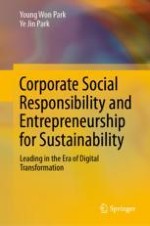2021 | OriginalPaper | Chapter
7. Role of CEO’s Moral Compass as the Organization’s Fourth Dimension (4-D) in the Era of Digital Transformation
Authors : Young Won Park, Ye Jin Park
Published in: Corporate Social Responsibility and Entrepreneurship for Sustainability
Publisher: Springer Singapore
Activate our intelligent search to find suitable subject content or patents.
Select sections of text to find matching patents with Artificial Intelligence. powered by
Select sections of text to find additional relevant content using AI-assisted search. powered by
